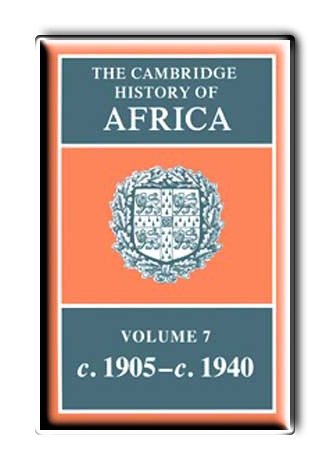The Cambridge History of Africa.
Volume 7, From 1905 to 1940
A. D. Roberts, ed. 1986. 29 maps 5 tables 1087 pages

The Cambridge History of Africa.
|
 |
By 1905 most of Africa had been subjected to European rule; in the 1940s, the colonial regimes faced widespread and mounting opposition. Yet the period surveyed in this volume was no mere interlude of enforced quiescence. The cash nexus expanded hugely, as Africans came to depend for access to household necessities upon the export overseas of primary products. For the first time, tropical Africa began to constitute a significant economic counterweight to North and South Africa. The impact of white rule on African health and welfare was extremely uneven, and African lives were stunted by the labour requirements of capitalist enterprise. Many Africans suffered greatly in the First World War and in the world depression of the 1930s. By then, however, population was generally on the increase, after half a century of widespread decline. Mental horizons were much enlarged especially in the fast-growing towns. By 1940 a majority of Africans were either Muslim or Christian. South of the Sahara, mission education helped Africans to challenge white monopolies of power. Literate Africans developed new solidarities: tribal, territorial, regional and Pan-African. Meanwhile, the colonial powers were themselves improving their understanding of Africa and trying to frame policies accordingly. Co-operation with indigenous rulers often seemed the best way to retain control at minimum cost, but the search for revenue entailed disruptive economic change. By the Second World War, most colonial regimes confronted not only the criticisms of literate Africans but organised protest among wage-earners and farmers, even though anti-colonial nationalism was sitll embryonic.